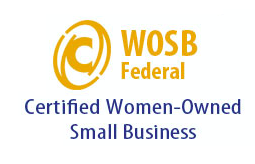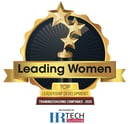
Conventional advice to women has little to say about executive communication, board communication and media skills. It's one reason why conventional advice to women won't close the gender gap at the top and why Leading Women focuses on these skills in our Leadership Mastery and Breakthrough Leadership programs. So, it's refreshing to come across a high-value news release from Anne D. Grant on executive communication.
In the excerpt below, notice that among the skills being tested were use of numbers, positive monetary impact and development of products/process (i.e. Outcomes). Her findings are aligned with what we teach about Using the Language of Power™ and the Power of Language and with how to Self-Promote with Grace and Authenticity™.
"With painstaking attention to every pause, 'eh,' and 'ah,' my team researched exactly how men and women answer the question: What are the accomplishments you are most proud of? Specifically, we analyzed video interviews of 20 men and 20 women in leadership roles at Fortune 50 companies in response to the question 'In your career, what are the accomplishments you are most proud of?' We chose this question because inevitably when leaders interview for promotions, they will confront this question. While not identical, the men and women were comparable in title as well as the representation of type of industry. We transcribed the 40 responses from the interviews. In terms of content dimensionality, we identified five categories of accomplishment: use of numbers, positive monetary impact, mentoring, development of products or processes, and position or longevity. We also used the transcriptions to analyze first-person pronoun usage, gestures, facial expressions, fillers, and response length.
"What did we discover? Executive women undermined their achievements by:
- talking more and saying less
- demonstrating lack of confidence by beginning their answers with "ahs," "ehs," and fillers
- failing to speak analytically about their achievements when speaking in the personal voice – and
- cluttering their communication with gestures
"The only category where executive women outshone men was in likability – as demonstrated by smiling more and having more facial expressions.'"
An absence of skill-building programs in these areas is one way that typical talent development resources have hidden gender bias.
If you're interested in ways to add this content to your leadership development offerings...







